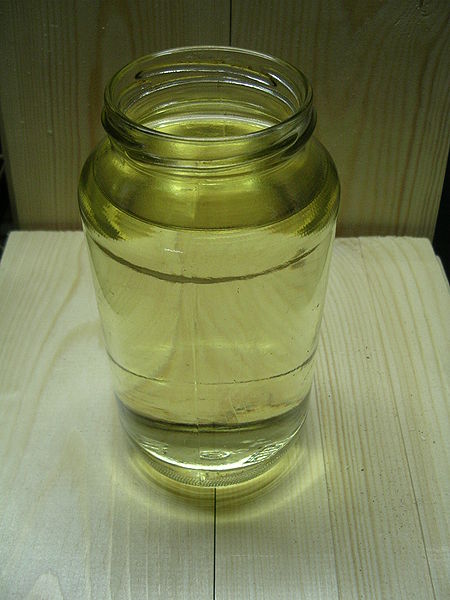Petroleum is a natural oil comprising mainly of hydrocarbons found under the crust of the earth. Petroleum is known as rock oil.
The latin word petra is for rock and oleum is for oil. It is found as crude oil in liquid, semisolid or in sold state. It is a hydrocarbon material with hydrogen and
carbon compounds as the principal components. Minor amounts of nitrogen, oxygen, sulfur and other impurities are also found in petroleum. Natural gas is also found along
with crude petroleum. Petroleum is found below the layers of sedimentary rocks. Petroleum is found on land areas and in the off shore areas of sea, and river deltas
and estuaries. Oil and gas are also found near saline lakes cut off from the sea water. Crude oil is extracted by drilling well and pumping the oil for transportation
and refining. Crude oil is mostly transported by oil pipeline and ship tankers, railway tankers and truck tankers
| Petroleum distillation | Temperature |
|---|
| Refinery Gas (LPG) mainly propane and butane | -160'C-40'C |
| Gasoline or Petrol | 30'C-200'C |
| Naptha | 120'C-200'C |
| Solvent Spirit | 120'C-260'C |
| Jet Fuel | 130'C-260'C |
| Kerosene | 140'C-290'C |
| Diesel | 140'C-300'C |
| Gas Oil | 180'C-350'C |
| Lubricating Oil | 200'C-350'C |
| Petrolatum | 220'C - 350'C |
| Light Fuel Oil | > 200'C |
| Heavy Fuel Oil | >250'C |
| Bitumen or Tar | |
| Wax | |
| Pitch and Coke | |
Petroleum Refining
Pretreated crude oil is heated in pipes in refinery furnaces. The vapours are passed through fractional distillation process.
The vapors are condensed under various temperature conditions. The process of condensation and vapourisation takes place many times.
The constituents of petroleum are separated according to their boiling points. The higher boiling points fractions condense towards the lower part of the system
and the lower boiling point fraction condense towards the upper point of the system.
Depending upon the presence of hydrocarbon petroleum is grouped below:
a) Paraffinic crude oil
b) Napthalic crude oil
c) Asphaltic ( Aromatic) crude oil
d) Mixed crude oil ( with paraffin, Naptha and Asphalfic components)
Uses of Petroleum Products
a) Liquified petroleum Gas- Known as the refinery gas, composed of propane and butane. Liquified before use. Used in domestic and industrial fuel.
b) Gasoline or petrol- Used for fuel of Jeep, Car, Scooter, Motorcycle, aviation fuel, generator fuel and dry cleaning.
c) Diesel- Used for fuel of Bus, truck, jeep, car, heavy armoured vehicle, loader, road roller, earth moving machine, excavator, drilling machine, generator,
tractor and pump set.
d) Kerosene- Domestic lighting, stove fuel and pump set fuel.
e) Jet fuel - Fuel for jet planes
f) Naptha- Used as solvent, thinner and blending, as naptha gas in steel plants, repellants and deodorants.
g) Gas oil- Fuel for industrial furnace and power plants.
h) Lubricating oil- Used as lubricants in machines and engines.
i) Petrolatum- Used in grease production.
j) Light fuel oil- Used as fuel in industrial furnaces and small power plants.
k) Heavy fuel oil- Used in furnaces and power plants as fuel.
l) Bitumen or Tar - Road construction and water proof coating.
m) Wax- Used for making candles and for coating.
n) Residue pitch - Used as road cover and cover for carbon electrodes.
Geology of Petroleum
Petroleum is associated with natural gas and found in a natural pool. The pool is covered by layers of sedimentary rocks. The oil is lighter than water, oil and gas are found in the
upper part of the container. The container is called oil trap. The portion of the trap that holds the pool of oil and gas is known as the reservoir of the oil. The reservoir rock
is porous and permeable. It is covered by an impervious hard rock called roof rock. Petroleum is found in the world in mostly sedimentary deposits of Triassic, Jurassic, Cretaceous
and Tertiary age. The maximum oil reserves are located in tertiary sediments. Small deposits are reported in association with carboniferous and permion rocks. Limestone and
limeshales are rocks mostly associated with petroleum and gas deposits.
Occurrence
Petroleum and gas are found in all the regions and continents of the world. The major oil producing countries are Saudi Arab, Iran, Iraq, Kuwait, Quotar, UAE, USA, Russia,
Mexico, Indonesia, Colombia, Venezuela, Canada, China, Trinidad, India, Peru, Brazil, Argentina, France, German, Austria, Sweden, UK, Italy, Norway, Neither land, Myanmar,
Algeria, Nigeria, Congo, Egypt, Gabon, Libiya, Morocco, Angola, Malayasia, Australia, Japan, Pakistan, Philippines, Vietnam, Cambodia, Thailand and Taiwan.
Origin of petroleum
Earlier ideas was that petroleum and gases are originated by reaction of acidic water with some mineral salts and production hydrogen and its subsequent combination with carbonaceous
substances. Then slowly oil and gas are formed and moved to a reservoir. But later on some evidences of marine and estuarine organisms were found in the crude oil deposits. So it was
thought that petroleum and associated gasses were formed by deposition of oils from foraminifera and organisms in the marine and estuarine conditions.
Oilshales
Oil Shales or Kerogen are organic shales that can produce petroleum by destructive distillation process.
These materials contain hydrocarbon, algae, pollen spores, insect bodies and plant bodies. Oilshales of Scotland, Canada and USA are used to extract petroleum oil.
Natural Gas
Natural gas is composed of paraffin hydrocarbons and methane gas. It become liquid form under temperature and pressure variations. Natural gas is used for fertilizer
production, power plants, sponge iron plants and cement plants.





